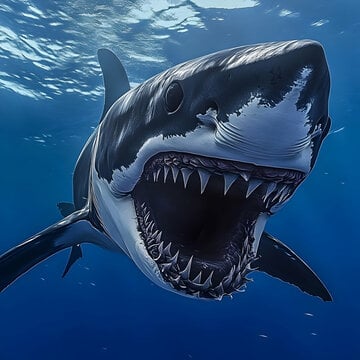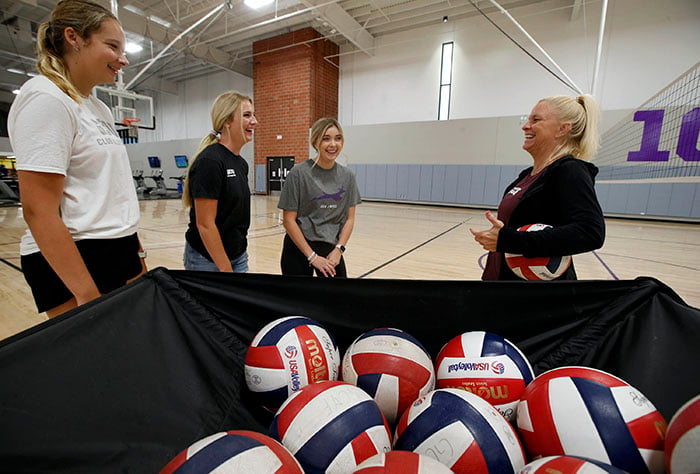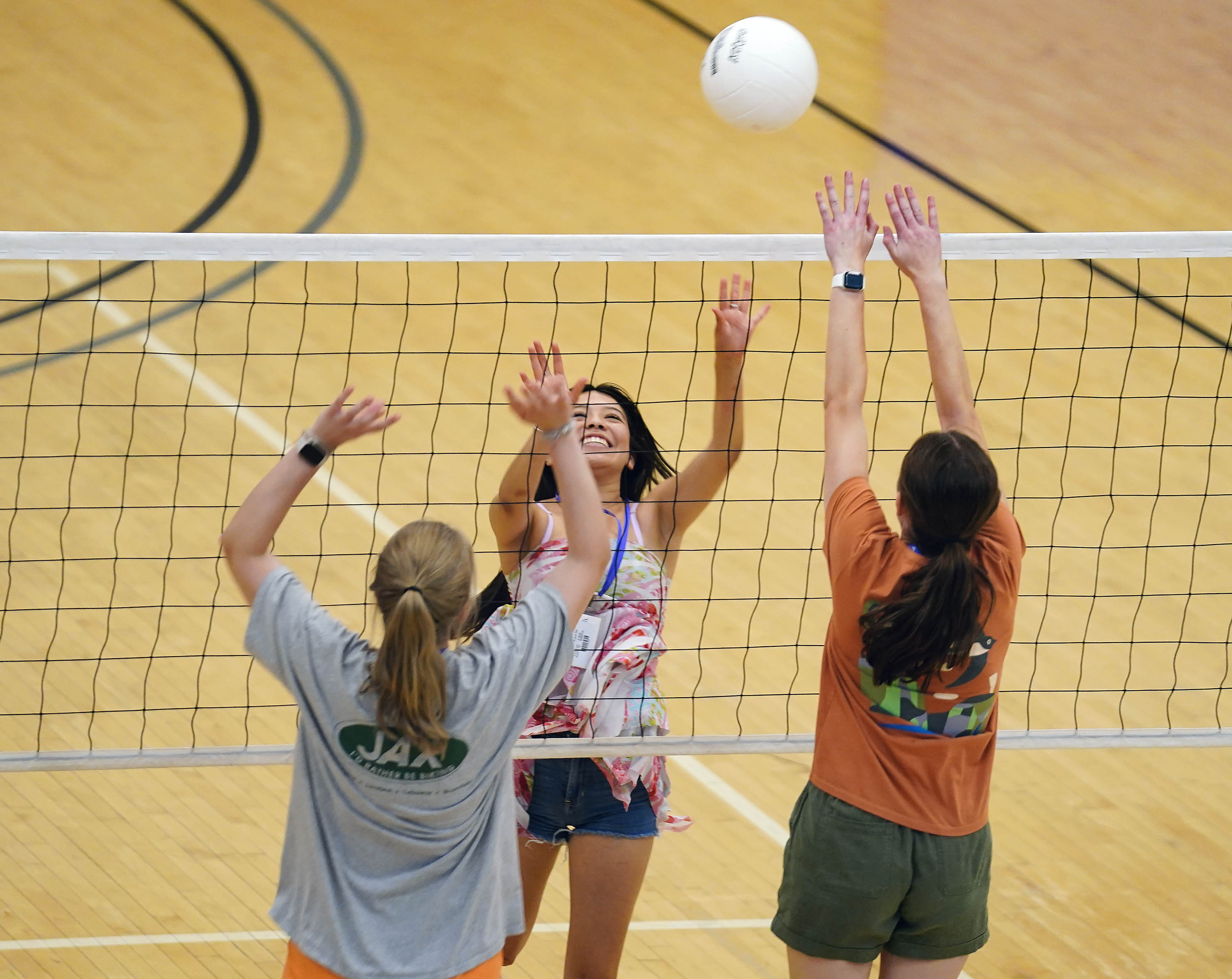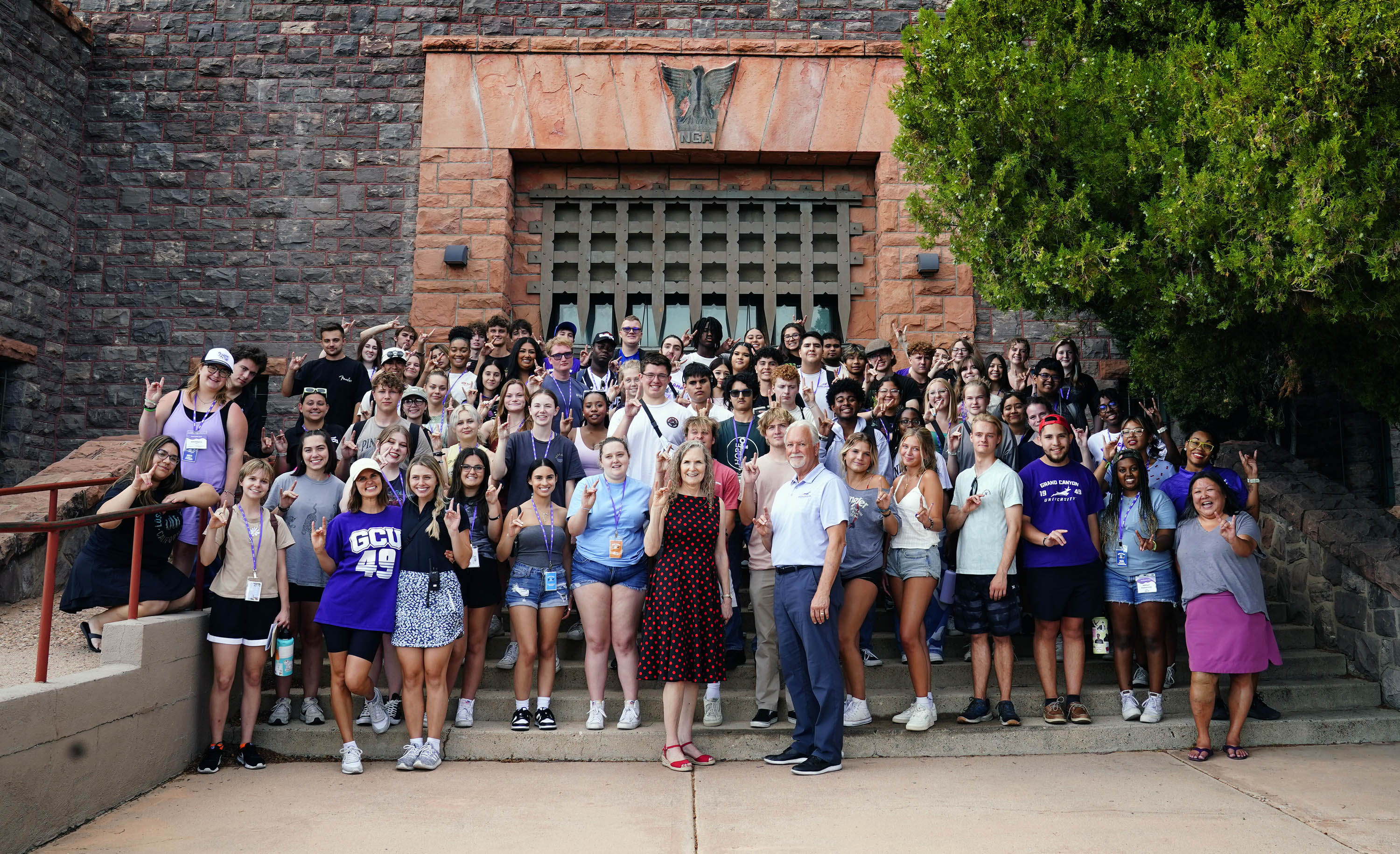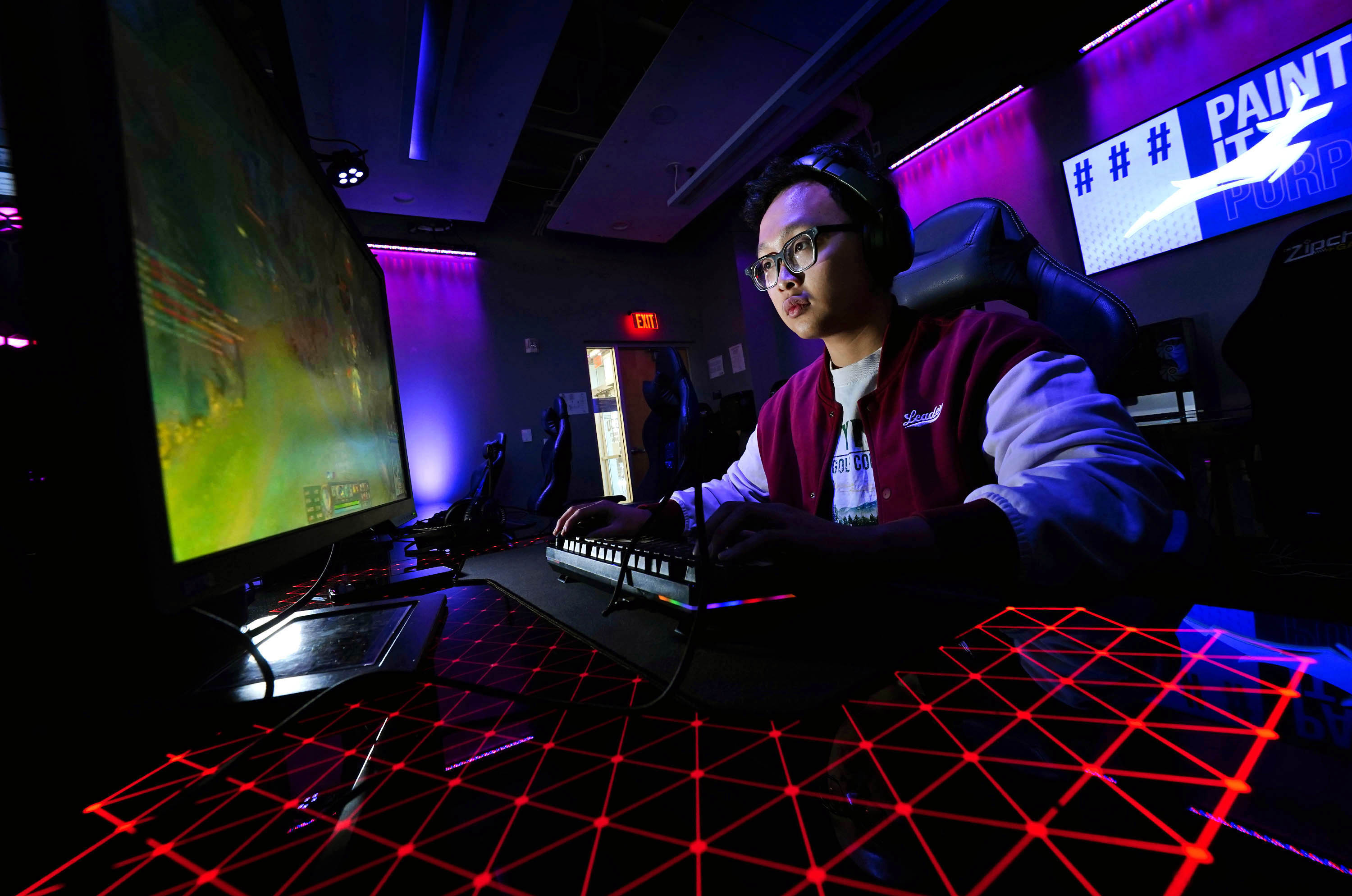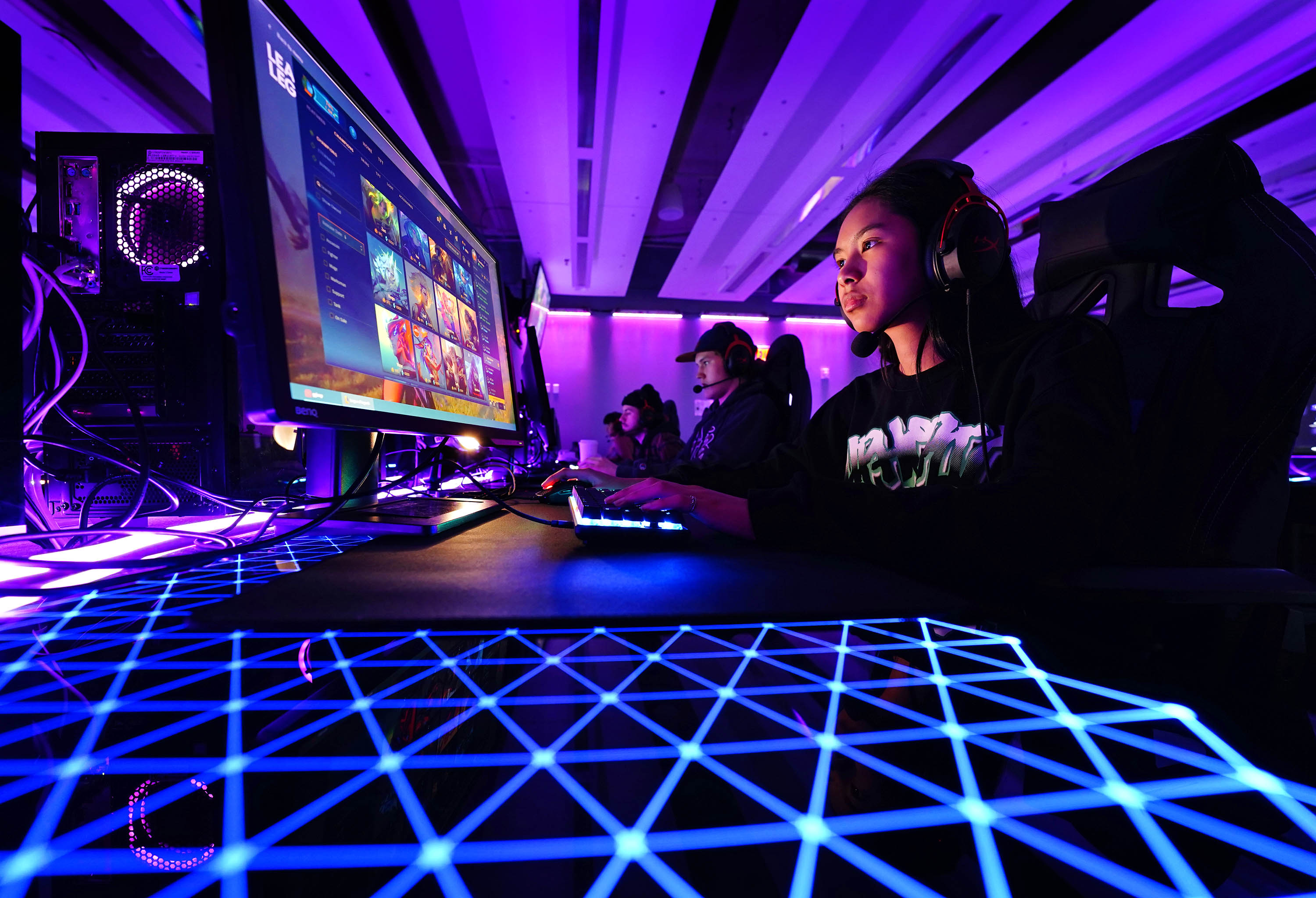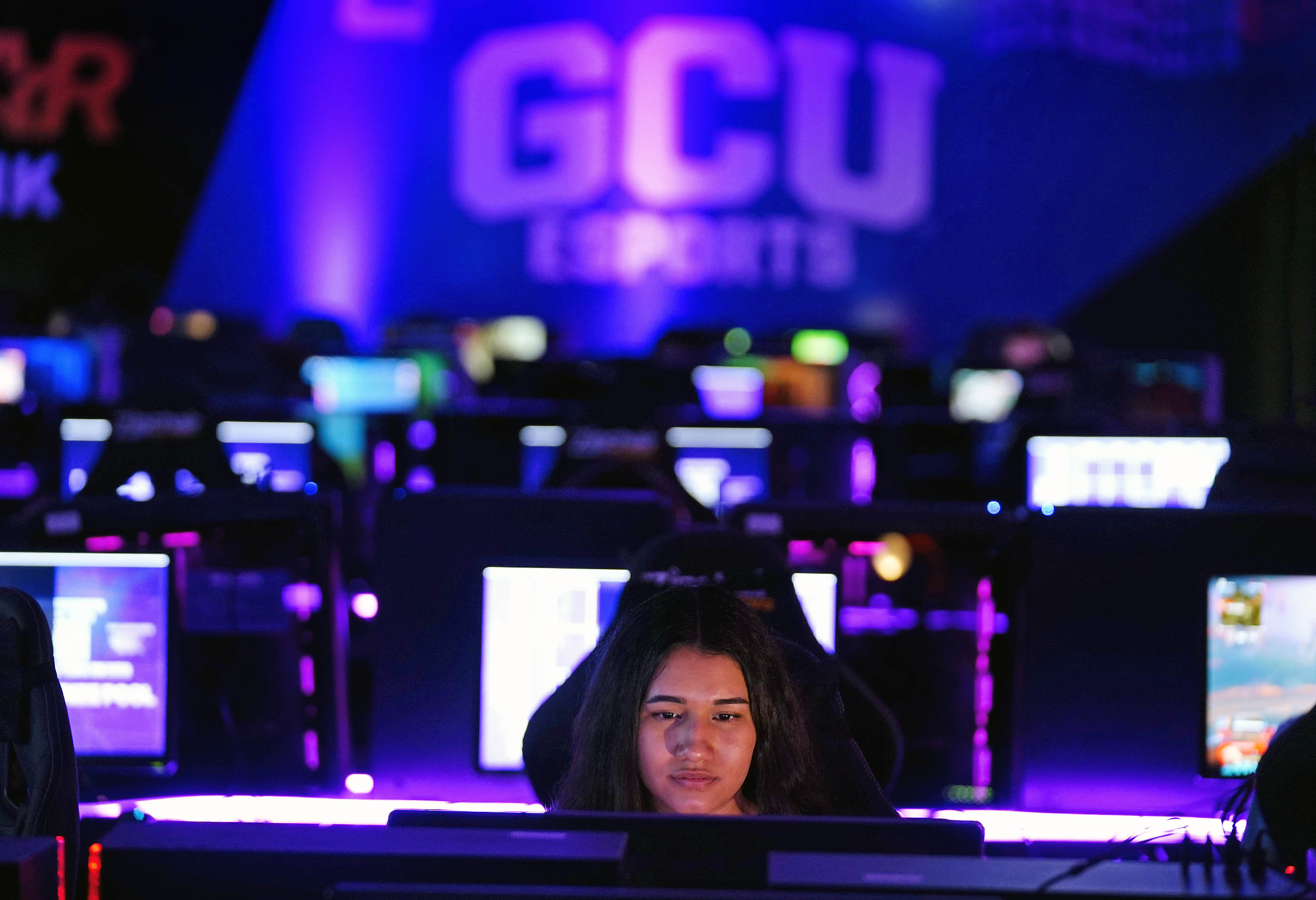
By Lana Sweeten-Shults
GCU News Bureau
When most 11-year-olds accessorize, it’s with a charm bracelet -- maybe a friendship necklace.
But if you happen to bump into Jade Chalmers and Elisabeth Montoya on the Grand Canyon University campus this week, you might notice that the vials hanging around their necks are far from charm-bracelet or friendship-necklace territory.
The seventh-graders, giddy and sparkly-eyed with all the science excitement GCU could muster, spent their Monday morning extracting their own DNA, gingerly placing it into vials and making a DNA necklace -- a pendant of science-y proportions, if you will.

Deoxyribonucleic acid got a big shout-out Monday at the Biovision bioscience and biotechnology camp, one of four Thunder Vision STEM Day Camps – that’s science, technology, engineering and math – unfurling this week on the GCU campus, courtesy of Strategic Educational Alliances, which supports kindergarten through 12th-grade students and educators and fosters a college-ready culture.
About 100 seventh-and eighth-graders for each of the four sessions of the STEM camps – Biovision, Cybervision (computer science and math), Robovision (robotics and engineering) and Technovision (technology integration) -- will be firing up their neurons on campus through Thursday.
It was in the “See Your Own DNA” session of the Biovision Camp that students gathered their own DNA, swishing Gatorade in their mouth, spitting that Gatorade/cell concoction into a cup, then adding detergent water and protease (a type of enzyme), along with cold alcohol to prod the DNA from the solution.
“We added laundry detergent to get rid of the cell membrane,” Montoya piped up, talking lickety-split, as if the universe didn’t have enough space for all her thoughts.
“Then we added alcohol,” her new camp best buddy, Chalmers, added.
“That makes the DNA come to the top,” continued Montoya, who wore a “Jesus Over Everybody” hoodie. “You can see a silky strand.”
At least you could see the silky strand developing in Chalmers’ sample.
“It’s not going well for me,” Montoya said, her head cradled on her forearm as her eyes peered up to the Gatorade-blue, liquid-filled tube she held just above her head.

“If you want to save your DNA, come over to this area, and I’ll show you what you need to do,” SEA K-12 Stem Outreach Manager Marni Landry said as she instructed a group of campers gathered around her to grab a pipette. “You only want to suck up the DNA in the clear layer,” which the campers then gingerly placed into an Eppendorf tube.
The do-it-yourself gathering of DNA activity inspired a flurry of questions:
“Does the DNA go away?" one student asked.
Landry answered, “If that tube is sealed? No," she said, mentioning that she has kept a vial of DNA for the past decade or so.
Another student asked, “If you inject someone else’s DNA, will that do anything to your DNA?”
“Just injecting DNA won’t do anything,” Landry answered. “You actually have to take the A’s and the T’s and the G’s and the C’s (adenine, thymine, guanine and cytosine, which make up DNA’s genomic alphabet) and attach them together chemically.”
Landry then had a few questions of her own for the class as they wrapped up their session before lunch break: “How many chromosomes are in one of your cells?”
Answer: That would be 46.
And, “What is the science dedicated to the study of fungi?”
“Fungiology!” submitted one student enthusiastically, though mycology was the correct answer.
Just across the hallway, in the “DNA: The Secret Code” session, another group of campers watched a video about how DNA, which stores our biological information, might just be the future of data storage in other ways.
Corporations such as Microsoft have invested in research studies showing how deoxyribonucleic acid can be used to store data. DNA seems perfect for it, since it doesn’t degrade over time (its half-life is 500 years and, in a dark environment, could last hundreds of thousands of years), and it is compact, so lots of data can be stored. According to a March 4, 2017, article on futurism.com, “just four grams of DNA can contain a year’s worth of information produced by all of humanity combined.”
Mind blown.

Students also made yet one more piece of scientifically cool jewelry -- DNA bracelets.
They used four different colored beads to strand together the DNA code for various living things, from a chimpanzee to a butterfly and a giant hissing cockroach, though the DNA code for the corpse flower seemed to be the class favorite.
“That one and the spitting cobra,” Brianne Sprehe said with a laugh. The GCU junior, who wore temporary DNA tattoos on her face just for fun, is studying to be a physician assistant and helmed the "DNA: The Secret Code" camp session along with two other University students.
Lane Cejka opted to strand together a DNA bracelet representing the coding for a flesh-eating microbe because: “It sounds awesome.”
Cejka, who attends Our Lady of Perpetual Help Catholic School, offers up a definitive answer to why he chose to attend the Thunder Vision STEM Day Camps: “I think science is really fascinating,” though DNA storage might not be in his future. “I want to be a computer scientist,” he said.
Zoe Rider, 13, of Trivium Preparatory Academy, who was stringing beads to replicate the corpse flower DNA code, aims to be a forensic scientist and said she picked these camps because they looked like fun. Her favorite activity so far: “Cutting out the enzymes to make the cancer-fighting plant-based thing.”
Translation: She loved when campers genetically engineered a plasmid -- a small circular piece of DNA that replicates independently from the host's chromosomal DNA -- via a paper transformation activity to move a cancer-fighting gene from a plant into a bacterial plasmid.

Chalmers wants to be a veterinarian when she grows up, and Montoya said she wants to be “a lot of things. I want to get a bachelor’s degree in chemical engineering, a doctorate in medicine and a master’s in law."
Carol Lippert, SEA's new Executive Director, said the purpose of these summertime Thunder Vision camps is “to bring STEM education to our middle school kids. It’s a nice alternative for summer programming for our community."
Sprehe said what she has loved about teaching these campers is, “Really seeing how passionate these kids are about science. A lot of them already have a lot of knowledge about science.”
GCU mechanical engineering major Maddie Bradshaw, a volunteer in the University's Learning Lounge, also helped teach the "DNA: The Secret Code" session with Sprehe.
She was amazed, she said, by the quality of the campers’ responses during their session: “You can tell this is something they’re interested in. … When I was their age, STEM wasn’t something that was prominent. It's just fun seeing how engaged the kids get.”
It's a busy time for SEA, which also is conducting a Code.org event this week and is preparing for SparkU next week for teachers in their fourth through seventh years of teaching. That means yet more summertime learning -- even if DNA necklaces likely won't be on the agenda.
You can reach GCU senior writer Lana Sweeten-Shults at lana.sweeten-shults@gcu.edu or at 623-639-7901.


